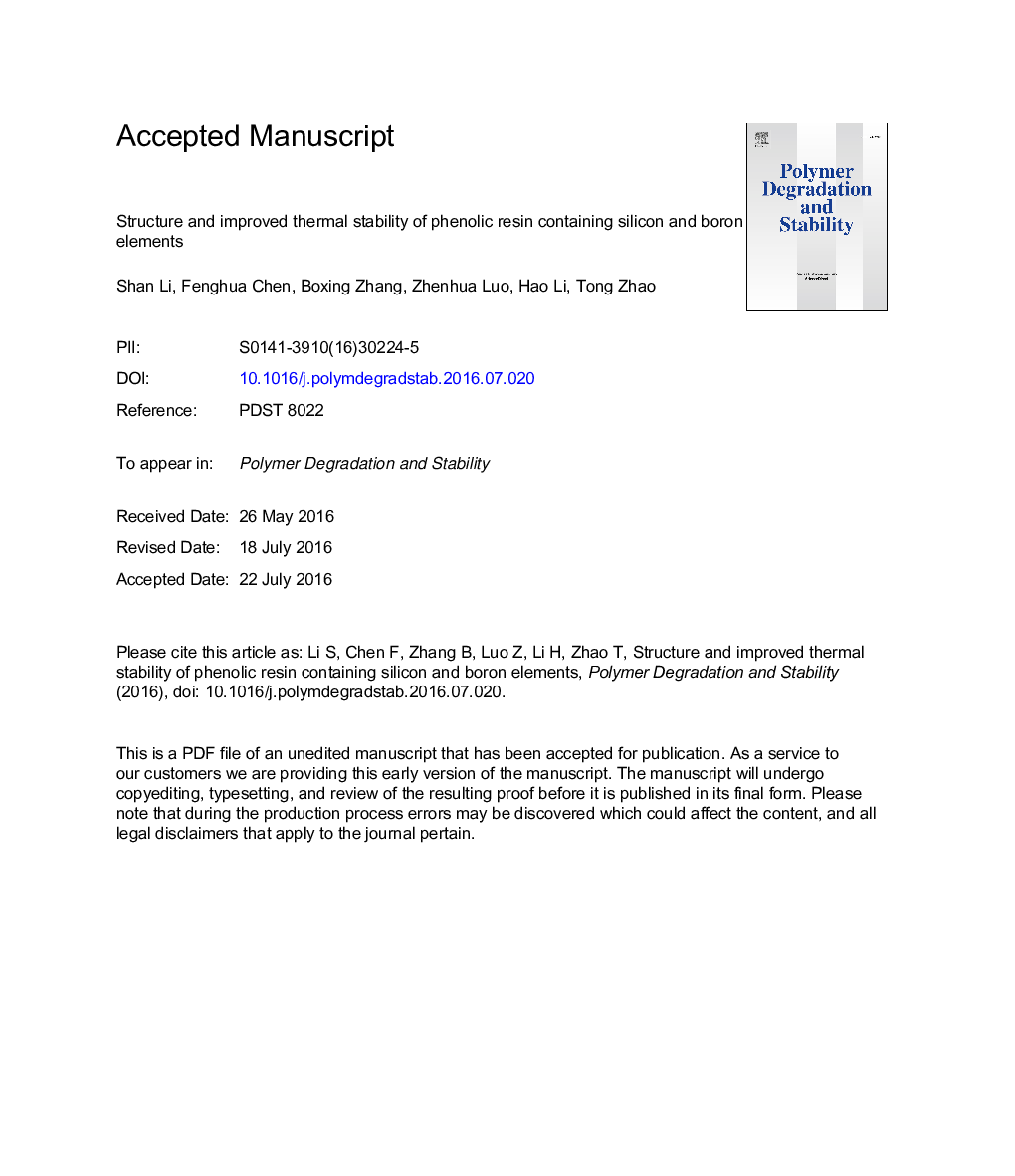| Article ID | Journal | Published Year | Pages | File Type |
|---|---|---|---|---|
| 5200977 | Polymer Degradation and Stability | 2016 | 21 Pages |
Abstract
Phenolic resin modified with silicon and boron (SNBA) was prepared by a simple two-step method: silane was firstly grafted onto phenolic resin, with silicon modified phenolic resin (SN) obtained; and then boric acid was introduced into SN. Boric acid, acting as a curing agent, catalyzed the self-polymerization of the silane in SN, and induced phase separation in the cured SNBA systems. Thermal stability was evaluated by thermogravimetric analysis (TGA). In air, the maximum decomposition rate (Dmax) decreased about 2%/min and the residual weight at 900 °C (R900) increased 16.7% after the introduction of boron and silicon. Oxyacetylene flame ablation also confirmed the improved ablative properties of the hybrids. The flame retardancy was studied by cone calorimeter. The total heat release (THR), the total smoke produce (TSP) and the rate of mass loss (RML) were decreased after the modification. The structure of the oxidized resin was characterized to study the mechanism of the improved thermal stability and flame retardancy. The oxide compounds of silicon and boron were formed during high temperature oxidation, which consumed some oxygen and hindered the permeation of heat and oxygen, protecting the matrix from thermal oxidation.
Related Topics
Physical Sciences and Engineering
Chemistry
Organic Chemistry
Authors
Shan Li, Fenghua Chen, Boxing Zhang, Zhenhua Luo, Hao Li, Tong Zhao,
